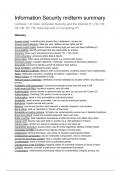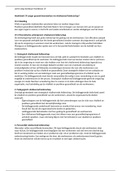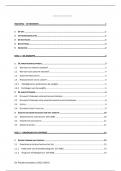Summary
Summary Midterm (Lecture 1-9) 2024 | Information security (INFOB3INSE) | UU information science
- Module
- Institution
This document contains the most recent summary of a combination of lectures 1-9 and the reading materials for these lectures. Making this summary, I have used my lecture notes, notes from reading the book, and the lecture slides. Everything you need to know for the midterm exam on is explained and ...
[Show more]







